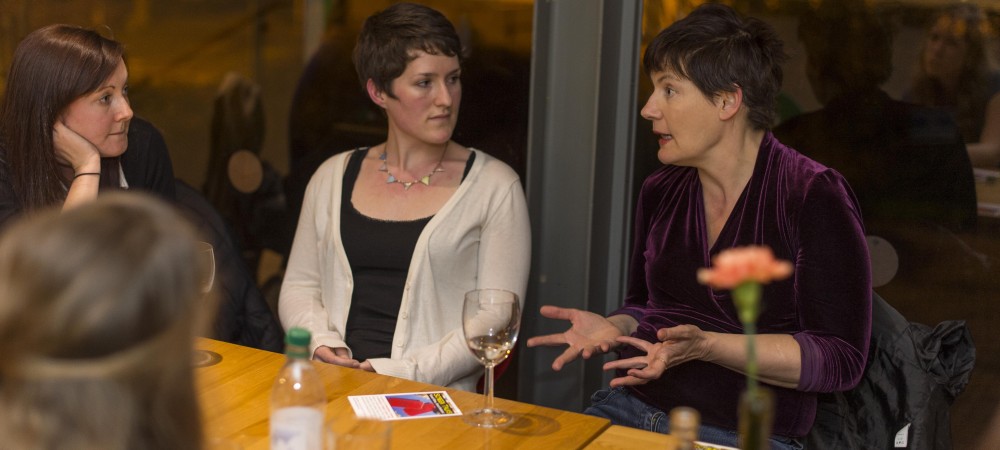On the 21st of October Dr Jana Funke of the University of Exeter (Department of English and Member of the Centre for Medical History) will introduce David Cronenberg’s A Dangerous Method (2011), starring Viggo Mortensen, Keira Knightley and Michael Fassbender. Part of the ‘Sickness on Screen’ strand of SCREEN TALKS, the film looks at how the intense relationship between Carl Jung and Sigmund Freud gave birth to psychoanalysis.
Join the event on Facebook and find out more here.
Booking Information: Book online, call the Box Office 0871 902 5730 or buy tickets on the door (half price for students on Mondays).
In this guest blog post Dr Jana Funke discusses the film and the important insights that it offers into the development of a scientific understanding of sex at the beginning of the twentieth century.
In A Dangerous Method, Sigmund Freud (Viggo Mortensen) explains to his erstwhile follower and later adversary Carl Gustav Jung (Michael Fassbender) that people will still reject psychoanalysis in the twenty-first century. In a way, Freud was right, as we love to make fun of psychoanalysis: not all of us want to have sex with our mothers and sometimes a cigar is just a cigar. However, we also live in a world in which talking is believed to cure and allowing people to express themselves is generally seen as conducive to health and wellbeing. Talking about sexual experiences and desires, in particular, is something many of us love to do, be it with our friends, in therapy sessions or on television. In this sense, we are very much invested in the so-called ‘talking cure’, which is the dangerous method referred to in the title of David Cronenberg’s film.[1]
Freud did not single-handedly invent the talking cure and A Dangerous Method reminds us of this fact. The film is about the relationship between Jung and the first patient he subjected to this experimental treatment, Sabina Spielrein (Keira Knightley). As you will know from seeing the trailer, Spielrein suffered from a range of debilitating tics and fits when she was admitted to Jung’s care at the Burghölzli clinic near Zürich in Switzerland in 1904. In the film, it is only after speaking about and satisfying her masochistic desires (both with the help of Jung) that her so-called ‘hysterical’ symptoms begin to disappear. In my talk before the screening, I will speak a bit about hysteria in relation to gendered ideas about illness and sexuality, and try to explain why people like Freud and Jung thought the talking cure might work.
I will also consider the film from a different angle. A Dangerous Method is not just a biopic about Jung and Spielrein’s relationship; it is a film about the history of psychoanalysis and sexual science more generally and this is where it speaks most directly to my own research interests. The emergence of psychoanalysis is part of a broader shift in Western understandings of sexuality as a result of which sexual desire came to be seen as something that should be studied and treated scientifically. This process begins in the nineteenth century and I am fascinated with the question of what it meant to think and write ‘scientifically’ about sexuality at that time. A Dangerous Method offers important insights here. In a way, Jung used Spielrein to gain access to Freud and to contribute to the emerging discipline of psychoanalysis. The film depicts brilliantly Freud and Jung’s changing relationship as they struggle to define the scope and aims of psychoanalysis. Whereas Jung, for instance, was interested in mysticism and keen to push the limits of acceptable scientific knowledge, Freud insisted that psychoanalysis had to be based on rigorous scientific principles. Freud’s authority and reputation were shaky – the film reminds us repeatedly that his Jewishness and lack of financial security, for instance, did not work in his favour – and yet it was he who ultimately succeeded in securing his name as the pioneer of psychoanalysis. A Dangerous Method sheds light on the more conflicted history of psychoanalysis and reminds us of some lesser-known contributors, including the radical Otto Gross (Vincent Cassell) and Spielrein herself. It also raises bigger questions that still matter very much today and that I would love to discuss after the film. For instance, what is at stake in understanding sexuality scientifically? What are the aims of therapy? And who gets to decide?
Jana Funke is Advanced Research Fellow in the Department of English at the University of Exeter. Her research interests include the history of sexuality and literature and culture in the late nineteenth- and early twentieth centuries. Read more about Jana’s research here
[1] The film is based on the play The Talking Cure (2002) by Christopher Hampton, which was inspired by John Kerr’s non-fiction book A Most Dangerous Method: The Story of Jung, Freud, and Sabina Spielrein (1993).

